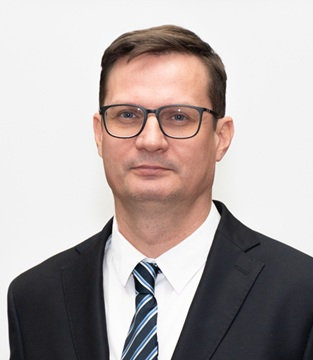In this interview, we discussed Nitra´s innovative approach to preventing extremism among youth in the city. The conversation introduced a program inspired by the Icelandic model of primary prevention, which the city has implemented to tackle this issue. This program focuses on the entire social environment of a young person and identifies risk and protective factors. Originally designed to prevent substance abuse, the model also addresses bullying, extremism, and other socio-pathological phenomena.
Do you have data or statistics showing the level of radicalization and extremism among youth in Nitra? What insights does this data provide?
We do not have direct statistics, but trends are observable through our work with schools and communities. Manifestations of extremism and bullying are increasingly shifting online, where young people face new forms of pressure and threats. It’s no longer just about physical altercations on the streets but rather online violence. We’ve also observed growing sensitivity among young people toward minorities and disadvantaged groups. The Icelandic model of prevention, which analyzes risk factors in social environments, helps us identify problems and propose solutions. Furthermore, discussions with experts suggest that extremism is becoming more prevalent among older generations, who are often harder to address, engage and work with effectively.
In 2023, Nitra became the first Slovak city to introduce the Planet Youth program, which significantly reduced youth substance abuse in Iceland. Have you seen any initial results from this project in Nitra? How has the program been received?
The program provides valuable insights into the social environment of young people. Unlike the typical Slovak prevention programs, which often rely on scaring or lecturing, this approach focuses on the conditions in which young people grow up. For example, we found that parental warmth and support strongly influence risky behaviors. Similarly, a sense of safety at school and perceived support from teachers are critical factors.
We also observed that young people in at-risk peer groups tend to adopt similar behaviors. We cannot expect them to resist peer pressure, whether related to violence or substance use, without supportive interventions. The findings emphasize the need to strengthen community ties and create safe spaces for youth—a challenging task given Slovakia’s underdeveloped community life.
How did you adapt the program to Slovak conditions?
The model is universally applicable, with the flexibility to be tailored to local needs. We developed our own guidelines to suit the Slovak context, focusing on cooperation between families, schools, and communities. A city action team was established to coordinate prevention efforts and involve key stakeholders. Our initiatives include morning circles in schools, a club for class teachers, and the ‘PTP’ method (pupil-teacher-parent). These activities foster a safe and supportive environment, gradually building trust between families and communities.
In urban areas, it’s uncommon for parents of students in the same school to know each other or collaborate on preventive activities. This is a new concept for us. We’ve also introduced ‘neighborhood walks,’ where parent patrols casually walk through their area in the evenings, observing where children and teenagers gather and identifying potential issues.
We cannot precisely measure the impact of these activities, as change often results from a combination of factors. However, schools have proven to be an accessible starting point. We’ve gained the support of school principals, and more schools are gradually joining the initiative, which is encouraging. Educators are beginning to see that the traditional approach—viewing a troubled young person as a ‘patient’—is ineffective. Together, we are fostering an environment that benefits everyone. Through our collaboration with the regional teacher support center, we established a class teachers’ club, recognizing their pivotal role in identifying early signs of risky behavior. We also offer guidance on working with students and engaging parents effectively during parent-teacher meetings.
Another key focus is creating safe meeting spaces for young people and multigenerational centers where various age and interest groups can gather. These infrastructure projects, however, require substantial financial resources. Given our limited political support in the city council, we rely heavily on external funding sources.
At the end of 2022, according to official UHCP data, 12,822 foreigners were living in Nitra, which is more than 10% of the total population of the city. How did you address this situation? What can you do as a city?
Maybe it was because we started the Planet Youth program just as the war in Ukraine began, so we incorporated Ukrainian refugees into the programs. That was our unique approach, and it worked very well.
We also launched the 'Let's Get to Know Each Other' grant scheme to support community projects. This scheme allowed urban communities to organize activities aimed at integrating refugees from Ukraine. Ukrainian youth have been involved in the youth parliament, and we’ve organized language courses and leisure activities. It was also crucial to employ a coordinator from the Ukrainian community who understands their needs and facilitates better communication between the city and the Ukrainian community. Our activities are inclusive, fostering an environment where Ukrainians feel fully integrated. UNICEF supported us, and they later showcased these initiatives as examples of successful integration activities. It was somewhat spontaneous, like everything in 2022, but we managed to achieve remarkable results.
 Photo: Miloslav Špotá, Vice-Mayor of the Nitra city in Slovakia (photo provided by PDCS).
Photo: Miloslav Špotá, Vice-Mayor of the Nitra city in Slovakia (photo provided by PDCS).
In some cities, municipal police adopt a more community-based rather than repressive approach, maintaining long-term dialogue with various groups on the streets. This helps with better oversight and less recidivism. Do you have similar experiences in Nitra?
The municipal police in Nitra pride themselves on maintaining a friendly relationship with the community. A notable example is their work with homeless people, who view them as protectors rather than merely a punitive authority. Homeless individuals are among the most vulnerable people and often become targets of violence from extremists. As part of the 'Connected by the Street' campaign, we shared the stories of homeless people, emphasizing their humanity. We participated in the 'Night Out' event, where ordinary citizens experienced what it’s like to sleep on the street. These activities are aimed at sensitizing the public toward vulnerable groups. I’ve personally participated in these initiatives and have had meaningful conversations with homeless people, who genuinely see the municipal police as a vital part of their safety. We also collaborate with the state and foreign police, especially in the integration of Ukrainian refugees.
What other activities does the city of Nitra undertake to prevent violent extremism and involve vulnerable groups?
The 'Democrats' project, despite its slightly humorous name, is one of the most significant initiatives in extremism prevention in Nitra. From its inception, I was involved in this project, which aims to develop a methodology for LARP—a live-action role-playing game. The goal is simple yet profoundly impactful: to simulate, in real time, the transformation of a democratic society into a totalitarian regime.
The game offers participants a unique opportunity to grasp the mechanisms that facilitate the rise of radicalism and totalitarianism. Instead of theoretical discussions, participants experience firsthand how easily one can succumb to manipulation and become part of an authoritarian system. I personally took part in one of the games, and I must say its impact was immense. I even struggled to reintegrate into my normal identity because of the game’s powerful emotional effects.
The 'Democrats' project includes two versions of the game. The larger version requires a full day of preparation and the involvement of multiple facilitators, while the smaller version is tailored for use in educational settings, such as history or civics classes. The game is suitable not only for young people but also for adults who need to understand how fragile democratic principles can be.
During the pilot phase, we welcomed partners from both the Czech Republic and Slovakia, ranging from ministry representatives and banking professionals to educational experts. Their feedback confirmed that the game is an exceptionally effective tool for fostering critical thinking and understanding the consequences of radicalization. We are now focused on training new facilitators to extend this methodology to other organizations and schools.
Interview conducted by: Lukáš Zorád and Zuza Fialová
This piece was published in partnership with PDCS - Partners for Democratic Change Slovakia
Background illustration: Lestat (Jan Mehlich), CC BY-SA 3.0.
